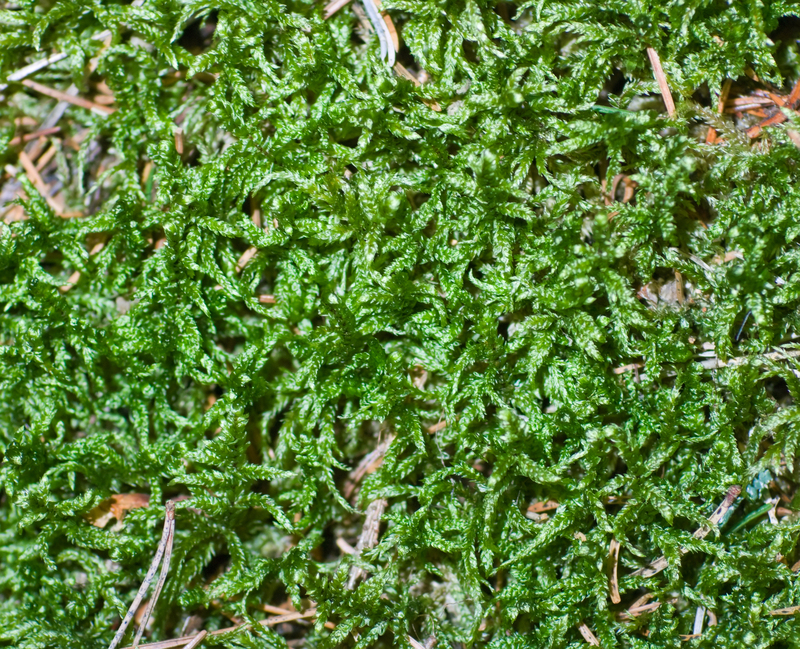From Soil to Sky: Gardening's Role in Climate Resilience
Posted on 12/09/2025
From Soil to Sky: Gardening's Role in Climate Resilience
Climate change has become one of the defining challenges of our time. With unpredictable weather, extreme events, and shifting growing patterns, individuals and communities are searching for ways to adapt and mitigate global warming's adverse effects. Gardening, often seen as a peaceful hobby or a mere aesthetic pursuit, is emerging as a powerful tool in building climate resilience -- right from the soil beneath our feet, all the way up to the sky above.
Understanding Climate Resilience
Climate resilience refers to the ability to anticipate, prepare for, and respond to hazardous events, trends, or disturbances related to climate. This involves not just adapting to changes but also mitigating future risks and minimizing associated damages to our environment, communities, and livelihoods.
- Adaptation: Adjusting practices, processes, and structures to moderate potential damage.
- Mitigation: Reducing the flow of greenhouse gases or enhancing processes that absorb such gases from the atmosphere.
Gardening plays an integral role in both adaptation and mitigation, empowering individuals and communities to become more self-sufficient and ecological stewards.

Rooted Solutions: Gardening as a Climate Resilience Strategy
Gardening, whether in private plots, community patches, or even window boxes, offers scalable benefits for climate adaptation and mitigation. From increasing biodiversity to improving food security, gardens are microcosms of healthy ecosystems. Here's how:
Enhancing Soil Health
Healthy soil is the foundation not only of a productive garden, but also of a resilient natural world. By tending our gardens mindfully, we can:
- Increase organic matter through composting and mulching, enhancing soil carbon storage.
- Support a robust soil microbiome, which boosts plant health and carbon sequestration.
- Limit soil erosion with ground covers, perennials, and minimal tilling practices.
Soil acts as a carbon sink. Gardens rich in organic matter trap carbon dioxide, thereby helping to offset greenhouse gas emissions. Composting kitchen and garden waste closes the nutrient loop and avoids emissions from landfill disposal.
Increasing Urban Green Spaces
Urban areas are often most vulnerable to heatwaves, flooding, and air pollution. Community and rooftop gardens can:
- Reduce the urban "heat island effect" by cooling ambient air and providing shade.
- Intercept rainfall and reduce runoff, lessening the risk of flash floods and water pollution.
- Filter particulate matter and absorb air pollutants, improving local air quality.
Strategically designed gardens not only create pleasant oases, but also transform urban neighborhoods into resilient ecosystems.
Boosting Local Food Security
Food gardens contribute directly to climate resilience by reducing reliance on long, carbon-intensive supply chains. Benefits include:
- Fresh, nutritious produce grown within walking distance, cutting food miles and related emissions.
- Improved dietary diversity and access to seasonal, uncontaminated food.
- Emergency food sources in case of supply disruptions.
During crises such as pandemics or extreme weather, gardens have proven to be vital community assets for food resilience.
Encouraging Biodiversity and Pollinator Health
Diverse gardens support pollinators--bees, butterflies, and other beneficial insects--and create habitats for birds, amphibians, and small mammals. By cultivating native plants and avoiding pesticides, gardeners:
- Build resilient ecosystems that recover from stresses more quickly.
- Enhance genetic diversity, supporting long-term adaptation to changing conditions.
- Maintain pollination services essential for food crops and wild plants.
Healthy biodiversity is a crucial buffer against the unpredictable impacts of a changing climate.
From Soil Health to Climate Health: The Carbon Connection
Soil as a Carbon Sink
Sequestering carbon in the ground is one of the most potent natural methods to mitigate climate change. Gardeners can be climate heroes by:
- Adding compost to lock carbon into the soil.
- Planting cover crops that absorb atmospheric carbon and enrich soil when turned under.
- Reducing soil disturbance to preserve soil structure, avoid carbon release, and foster stable habitats for carbon-storing microbes.
Regenerative gardening--with minimal tilling, crop diversity, and organic amendments--mirrors agricultural practices now promoted on global platforms for carbon sequestration.
Gardening's Role in the Water Cycle
Gardens not only trap carbon, but also play a role in improving water cycles and resilience against drought and flood:
- Deep-rooted perennials help water infiltrate and recharge groundwater.
- Mulching and soil cover reduce evaporation, keeping soil moist during hotter, drier spells.
- Bioswales, rain gardens, and permeable paths slow stormwater and reduce pressure on city infrastructure.
Every garden, no matter its size, is a potential climate sponge, managing both water and carbon to create healthier landscapes locally and globally.
Practical Steps for Climate-Resilient Gardening
Whether you're starting your first windowsill planter or stewarding an entire community allotment, you can help fight climate change right at home.
Here's how:
Choose the Right Plants
- Diversify species, prioritizing perennials and native plants adapted to local conditions--they're more resilient and less resource-intensive.
- Incorporate deep-rooted varieties that boost soil carbon storage and water infiltration.
- Wildflowers and pollinator gardens nurture beneficial insects and enhance resilience against pest outbreaks.
Improve Your Soil
- Add organic matter regularly through composting, mulching, and green manure crops.
- Use no-dig or low-till methods to foster healthy soil biota and structure.
- Test soil and monitor moisture to avoid over-fertilization and water wastage.
Healthy soil is the backbone of climate-adaptive gardening.
Manage Water Sustainably
- Install rain barrels or build swales to capture and use rainwater efficiently.
- Use drip irrigation or soaker hoses to minimize water loss and ensure consistent moisture.
- Group plants with similar water needs to reduce irrigation requirements.
Foster Biodiversity
- Plant a variety of species for continuous blooms and habitat variety.
- Include trees, shrubs, groundcovers, and flowering plants for a multilayered habitat.
- Avoid chemicals; embrace organic pest control and encourage beneficial insects.
Support Community and Education
- Create or join community gardens, sharing resources, seeds, and knowledge.
- Teach others, especially children, about sustainable gardening's role in climate resilience.
- Volunteer for local conservation projects or habitat restoration efforts.
The more people who garden with climate resilience in mind, the greater the collective impact.
Innovations in Climate-Resilient Gardening
While traditional gardening wisdom is invaluable, innovative practices are enhancing gardening's ability to withstand climate shocks:
Permaculture Design
Permaculture is an approach to garden and landscape design that mimics the diversity, stability, and resilience of natural ecosystems. Key principles include:
- Interconnected plantings that create self-supporting systems.
- Water harvesting and management integrated into site layout.
- Perennial food crops and edible forest gardens replacing annual, high-input monocultures.
Agroecology and Urban Farming
Cities worldwide are embracing urban farming and agroecological techniques to boost local food security and urban greening. Examples:
- Rooftop gardens insulate buildings, reduce stormwater runoff, and cool city air.
- Vertical gardening maximizes production in small spaces while insulating and shading buildings.
- Edible landscapes integrate food plants throughout residential and public green spaces.
Smart Gardening Technology
- Soil sensors and smart irrigation optimize water use and tailor nutrients to plant needs.
- Online climate models and garden planning tools help select resilient varieties and planting times.
- Seed-saving networks ensure locally adapted varieties are preserved and shared.
Gardening's Global Impact: Policy and Community Change
Governments, NGOs, and environmental bodies increasingly recognize the value of gardening for climate adaptation and mitigation. Notable developments include:
- Policy incentives for urban agriculture and green infrastructure.
- Funding for community garden programs in food deserts and disaster-prone regions.
- Integration of gardening into educational curricula for climate literacy and skills-building.
Gardening as a climate resilience strategy has grown from private acts of care into a significant part of public policy and urban design.

Challenges and Future Directions
Despite clear benefits, gardening for climate resilience faces challenges:
- Access to land, resources, and knowledge can be limited, especially in under-resourced communities.
- Extreme weather events require resilient infrastructure, such as raised beds or hardy plant stocks.
- Pest and disease pressures may increase as climate zones shift.
Continuous research, investment, and grassroots action are needed to overcome these barriers and ensure that resilient gardening remains inclusive and effective worldwide.
Conclusion: Cultivating Hope from the Soil to the Sky
From backyard plots to community spaces and urban rooftops, gardening is a dynamic solution for climate resilience accessible to individuals, families, and entire neighbourhoods. By tending soil health, supporting biodiversity, preserving water, and producing local food, gardeners are literally and metaphorically raising resilience "from soil to sky."
With every plant we nurture and every handful of compost we add, we build a more hopeful, adaptive future -- right at home. As we encourage more people to join in, the power of gardening grows, connecting communities and ecosystems in the face of a changing climate.
Embrace gardening as your path to cultivating climate resilience. Every garden matters. Every gardener is a steward of our planet's future.

